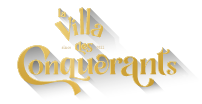The rapid prototyping workshop is extracted from design thinking. To sum it up quickly, it is about bringing various ideas to life, to measure their effectiveness, viability and potential quickly.
Before really starting to prototype, you have to start by sorting out the different ideas that have been submitted during the ideation phase.
For this, several possibilities are offered to you, initiated by the speaker. For example by a vote of the group members, or a unanimous selection, a favorite, etc.
Simplicity is generally the idea to keep. This makes it possible to build a clear and quick prototype for everyone. The prototype can take many forms. Whether it is physical, with a model, a LEGO version, or a spatial representation. Or sometimes virtual, with a virtual model, a drawing, a wireframe, etc.
All these tools will be proposed to you by the specialists of the Villa, in order to guide you in the creation the most adapted to your prototype, but also the most adapted to you. Indeed, our brain is not identical, some will have to privilege a physical and precise visualization. Where for others, a more conceptual and figurative vision is understandable.
Prototyping is a golden rule in many businesses. And it’s not just for start-ups. In many sectors, it is customary to prototype, test and iterate in order to adjust the viability of a product. In the automotive world, which makes clay prototypes of its cars. Or in aviation, with the virtual twin.
Companies call these iterations the MVP or Minimum Viable Product. This step is essential to save time and money in the face of problems that can sometimes be out of touch with reality or unrealistic.
This phase has two major advantages, the improvement of communication, inter and intra services. But also the possibility to iterate. An idea that remains in the state of thought has little chance of being viable. It’s important to bring it to life in the real world and present your prototype to your team and users who can then give different opinions.
Sometimes, ideas are born or evolve when putting them into practice. This is something that must have happened to you before, and prototyping is partly based on this phenomenon. Let’s say you have an A idea in your mind. You decide to prototype it, but while you are making the model, you think of a major change that will fundamentally improve your basic concept. So you end up with a B idea.
Just as you are about to finish your model, you see another team member’s model. You are inspired by one of the features of his prototype and decide that it would fit perfectly into your own model. You end up with an idea C at the end of your prototyping phase, which is generally more complete and relevant than the idea A you had in mind at the beginning.
And this is precisely one of the strengths of the prototyping phase: the Design Thinking is intended to be an innovative and relatively “decompartmentalized” method where the various designer actors can be in contact and exchange regularly. The objective is to generate ideas by each participant and whose developments are human-centered. What if the Villa teams could help you take this step?
